Moving Pictures: Painting, Photography, Film
-
 The Last Statement of Painting I, by Sam Erenberg
The Last Statement of Painting I, by Sam Erenberg
-
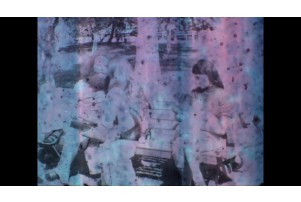 The Last Statement of Painting II, by Sam Erenberg
The Last Statement of Painting II, by Sam Erenberg
-
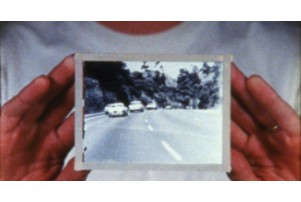 Pasadena Freeway Stills, by Gary Beydler
Pasadena Freeway Stills, by Gary Beydler
-
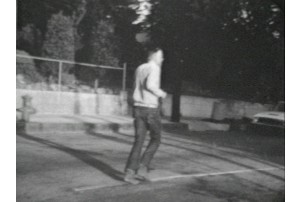 John Baldessari. "Walking Forward-Running Past," 1971. Courtesy Electronic Arts Intermix (EAI), New York, eai.org
John Baldessari. "Walking Forward-Running Past," 1971. Courtesy Electronic Arts Intermix (EAI), New York, eai.org
-
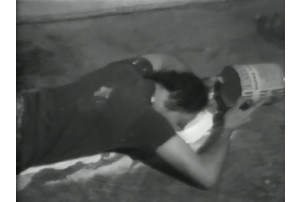 Paul McCarthy. "Black and White Tapes," 1970-75. Courtesy Electronic Arts Intermix (EAI), New York, eai.org
Paul McCarthy. "Black and White Tapes," 1970-75. Courtesy Electronic Arts Intermix (EAI), New York, eai.org
-
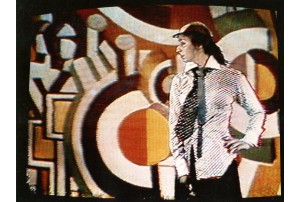 Dada Knows Best, by Eugene Timiraos
Dada Knows Best, by Eugene Timiraos
-
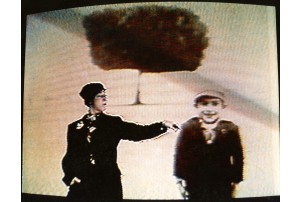 Dada Knows Best, by Eugene Timiraos
Dada Knows Best, by Eugene Timiraos
-
 Dada Knows Best, by Eugene Timiraos
Dada Knows Best, by Eugene Timiraos
May 12, 2012, 8:00PM
Echo Park Film Center, 1200 N. Alvarado St., Los Angeles CA 90026
Movies are made up of many still images, moving rapidly through a projector. And they are among the two-dimensional pictorial arts, along with painting and photography. And here’s a show bringing these ideas front and center, with lively deconstructions of movies into stills; commentaries on the “death” of painting; explorations into the possibility of making moving paintings; and intense explorations into the meaning of still images in the creation of identity of a people. Including films by many artists, often people who also work in paint: John Baldessari, Paul McCarthy, Sam Erenberg, Morgan Fisher, Gary Beydler, and more!
In person: Sam Erenberg, Sylvia Morales, Eugene Timiraos (schedules permitting)
Tickets: $10 general, $6 students/seniors, free for Filmforum members,
Films to be Screened
-
Production Stills (1970, 16mm, 11 min.)
Directed by Morgan FisherPRODUCTION STILLS may be the most elegant of Fisher's early films. In a single, continuous, roll-long shot, we see at first a blank screen (actually a portion of a white wall) and a flash of light; then, after thirty seconds or so, hands enter the image and mount a black-and-white Polaroid photograph in the center of the image: this photograph, and the seven which are subsequently mounted, one at a time, in the same way, reveal the procedure we are apparently seeing the results of. -- Scott Macdonald, "Morgan Fisher: An Interview," Film Quarterly, Spring 1987
-
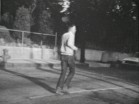 John Baldessari. "Walking Forward-Running Past," 1971. Courtesy Electronic Arts Intermix (EAI), New York, eai.org
John Baldessari. "Walking Forward-Running Past," 1971. Courtesy Electronic Arts Intermix (EAI), New York, eai.org
Walking Forward-Running Past (1971, video, b&w, sound, 12:45)
Directed by John BaldessariIn Walking Forward-Running Past, Baldessari ingeniously employs photography and video to examine and ultimately deconstruct film. In this conceptual exercise, he tapes up photographic film stills of himself walking toward the camera—coming closer with each successive image—and then photos of himself running past it. The sequentiality of this action results in a crude montage, an ultimately futile attempt to recreate the phenomenological experience of cinematic movement. Gasping with exertion, Baldessari quickly and repeatedly replaces photo after photo. In his efforts to evoke the cinematic experience, a layered metonymic relationship develops between the static, photographic image of Baldessari running and his "real" movements on video. – Electronic Arts Intermix
-
 Pasadena Freeway Stills, by Gary Beydler
Pasadena Freeway Stills, by Gary Beydler
Pasadena Freeway Stills (1974, 16 mm, color, silent, 6:00)
Directed by Gary Beydler"I had one of my graduate students drive the car, and I filmed 16mm black and white negative driving through these four consecutive tunnels on the Pasadena freeway. I wound up doing about 1400 paper prints from the individual frames in the negative. I mounted a piece of glass in my garage, with a square of tape marked out on it. I sat down behind the glass with a white T-shirt on and started shooting the stills. My wife Sarah shot the first part, and as the shots got shorter and shorter, I shot it myself using a bulb hooked up to the camera that I operated with my foot. I originally meant to shut it off and fade it out to end it, but while I was shooting, I decided instead to reverse the procedure, slowing the shots back down. I called Sarah back to shoot the last part. I always had the idea of sound, but I could never figure out what the heck kind of sound to have in this film." -- Gary Beydler, 2008
"Possibly the most lucid, vivid, and awesome demonstration of the building up of still images to create moving ones, Pasadena Freeway Stills simply, gracefully and powerfully shows us the process by which we are fooled by the movies. By doing so, Gary Beydler mines a very rich vein of associations and metaphor, without the slightest ostentation.
"Constructed as a thrilling arc of realization and, in a quite moving way, disappointment, the film is a beautiful articulation of our emotional entanglement with moving images, while simultaneously creating a form in which the illusion of cinema is brought into incredible relief as the film we're watching gradually catches up to the film Gary is holding up to the camera with his hands, one frame at a time." -
The Last Statement of Painting I (1970, 7:58, super 8 trans to video, silent)
Directed by Sam Erenberg -
The Last Statement of Painting II (1970, 4:08, super 8 trans to video, silent)
Directed by Sam Erenberg -
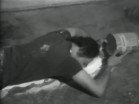 Paul McCarthy. "Black and White Tapes," 1970-75. Courtesy Electronic Arts Intermix (EAI), New York, eai.org
Paul McCarthy. "Black and White Tapes," 1970-75. Courtesy Electronic Arts Intermix (EAI), New York, eai.org
Painting Face Down - White Line (1972 , video, b/w, 2.5 min)
Directed by Paul McCarthy -
Whipping the Wall with Paint (1975, video, b/w, 2 min)
Directed by Paul McCarthyFrom McCarthy’s Black & White Tapes, these early black and white performance tapes from the 1970s reveals the nascent development of the themes, the raw physicality, and the performance personae that mark McCarthy's well-known later works. In several pieces, McCarthy uses his own body as a tool to examine the process of making art: In the first, he becomes a human paintbrush as he drags himself across the floor while holding an open can of white paint; in the second, he violently whips the walls and pillars of his studio with a large paint-soaked sheet. – Electronic Arts Intermix
-
Abacus (1980, silent, 5 minutes)
Directed by Lyn Gerry and Estelle KirshStill lives in changing light -
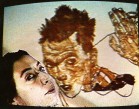 Dada Knows Best, by Eugene Timiraos
Dada Knows Best, by Eugene Timiraos
Dada Knows Best (1979, video, color, sound)
Directed by Eugene TimiraosDada Knows Best is an attempted tour of modern 20th century western art. Our fabulous guide (Amy Halpern) distractedly interacts with numerous visual artworks, borrowing a line from Tristan Tzara's 1920 Dada play, The Gas Heart. ("This conversation is lagging, isn't it?"). The soundtrack is pataphysical collage of jazz or music of the day. Blink and you'll miss it. 'Cause, y'know, the kids and their music, that's where it's at.
-
Medea (1973, Digital video, transferred from 16mm, color, 7 min.)
Directed by Ben CaldwellVideo courtesy of the UCLA Film & Television Archive
Made as Ben Caldwell’s first project at UCLA, Medea is a collage film that explores the information that permeates into a child before it is born. – Allyson Nadia Field
-
Chicana (1979, 16mm, color, sound, 23 min)
Directed by Sylvia MoralesCHICANA traces the history of Chicana and Mexican women from pre-Columbian times to the present. It covers women's role in Aztec society, their participation in the 1810 struggle for Mexican independence, their involvement in the US labor strikes in 1872, their contributions to the 1910 Mexican revolution and their leadership in contemporary civil rights causes. Using murals, engravings and historical footage, CHICANA shows how women, despite their poverty, have become an active and vocal part of the political and work life in both Mexico and the United States.
"A well-researched and spirited documentary made with much love."
Linda Gross, Los Angeles Times